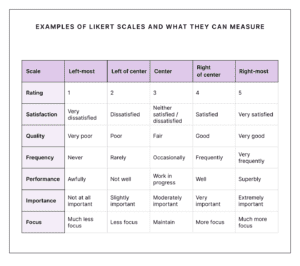Chinuch From the Inside Out:
As seen in the EmBRace Magazine
By: Mrs. Chanah Rose
All or Nothing
 Another potential pitfall to the checklist mentality, that some children and adults can fall prey to, is an “all or nothing,” “throw out the baby with the bathwater,” approach. I once experienced this when I missed counting Sefiras Ha’omer on – gulp – the second night. Subsequently, when my husband reminded me to count Sefira, I responded with a wave of the hand and indifferent look that indicated, “Oh, I don’t do that this year.” Psychologically, it was easier to define myself as not the kind of person who counts Sefira than to face my dismal flop by counting without a Bracha when I did remember.
Another potential pitfall to the checklist mentality, that some children and adults can fall prey to, is an “all or nothing,” “throw out the baby with the bathwater,” approach. I once experienced this when I missed counting Sefiras Ha’omer on – gulp – the second night. Subsequently, when my husband reminded me to count Sefira, I responded with a wave of the hand and indifferent look that indicated, “Oh, I don’t do that this year.” Psychologically, it was easier to define myself as not the kind of person who counts Sefira than to face my dismal flop by counting without a Bracha when I did remember.
This experience was a powerful lesson to me. Many young people may look at a lofty goal and become paralyzed by anxiety, defining themselves by the boxes they missed instead of those they checked off. Kids might collapse in tears or give up entirely because of perfectionism. Older children might have a different reaction to mask a similar feeling. Similarly to how I rearranged my self-concept during Sefira that year to protect my pride, a teenager might build a wall of cynicism that says, “Oh, that’s not me,” as a self-preservation tool.
Many children thrive on the challenge and the adrenaline of traditional checklists and incentive programs. For those who don’t, understanding why might help us to “talk them off the cliff” and calm their anxiety. Or, we can modify or offer an alternative that works for them.
A Checklist of Modified Checklists:
There are many ways to modify checklists when appropriate, for those children who don’t respond well to them, or for more abstract and less measurable goals. Here are just a few:
- Self-check: We are used to students checking off their own achievements in Tzivos Hashem and other areas. But this becomes even more important in areas that the teacher can’t objectively measure – such as Kavana in davening, Ahavas Yisrael, etc. While these themes have an observable aspect, asking students to mark themselves on their inner dimension helps the checklist feel more authentic.
- Individualized goals: In addition to the student marking themselves, maybe they can choose the goals in the first place. What is their growth target this semester for improvement in davening? How much more often can they push themselves to be punctual, organized, or another aspect of school work? Which three of this list of Chassidishe hanhagos do they want to choose to grow in this year?

- Shades of gray: Sometimes, an aspect of growth is black and white, and sometimes it’s more gray – a continuum. Perhaps providing a “Likert scale” type checklist – including answers such as “some of the time” or “most of the time,” “some improvement” or “much improvement,” and other nuanced responses instead of just yes or no – can help students internalize the subtle nature of personal growth. A five point scale (choose a number from 1 to 5, with 1 being never and 5 being always, or 1 being not at all and 5 being extremely well) can also do the trick.
- Journals and Portfolios: I may be accused of being partial to journaling as it shows up in almost every one of my Chinuch articles! But it’s true, there is a certain magic to free-writing to reflect on personal growth and draw lessons from each day’s attempts. For example, write a few sentences on how you feel your learning went today, or your davening, etc. Portfolios are more structured, and ask students to collect samples of their work over the course of the year. Both allow us to look back to the beginning of the year and compare it to the end, tracking and celebrating growth.
Tool or Mindset?
 Clearly, checklists are a valuable tool in our arsenal of Chassidishe Chinuch. However we decide to use them, let’s remember that any Chinuch tool also translates into a mindset. The way that we communicate about these checklists, as well as the other avenues for Chinuch we provide, will make all the difference in how students view themselves and the process of growth throughout their lives.
Clearly, checklists are a valuable tool in our arsenal of Chassidishe Chinuch. However we decide to use them, let’s remember that any Chinuch tool also translates into a mindset. The way that we communicate about these checklists, as well as the other avenues for Chinuch we provide, will make all the difference in how students view themselves and the process of growth throughout their lives.
Let’s gift our children and ourselves an inner ladder, not just an inner yardstick.
Let’s free up our inner resources from self-criticism, allowing more energy for true growth.
Let’s emphasize a core identity that is not defined by outward behavior only, and that can sustain flexibility, changing circumstances, and individual challenges.
And let’s remember to celebrate growth in all of its forms, big or small, linear or non-linear, visible or hidden. Now that’s something you can keep checking off your list!
Chanah Rose is the Educational Director of the Menachem Education Foundation. She can be contacted at c.rose@mymef.org.





